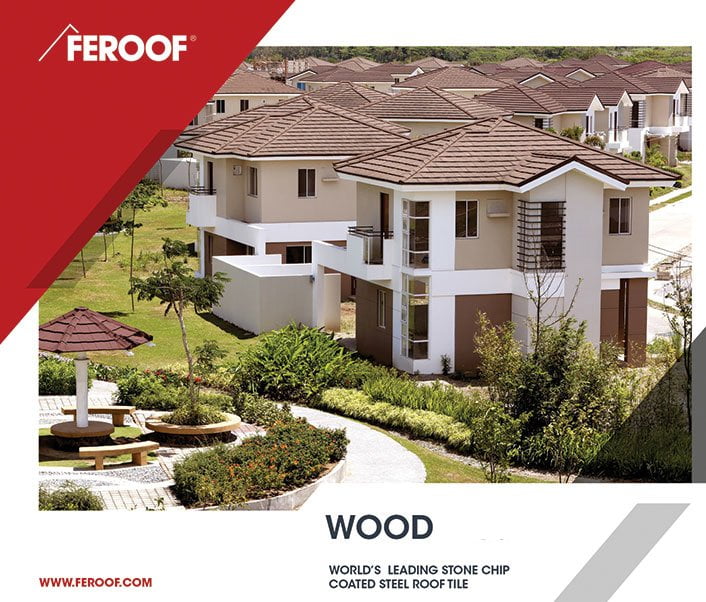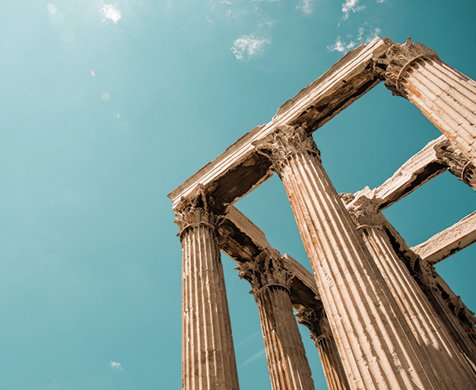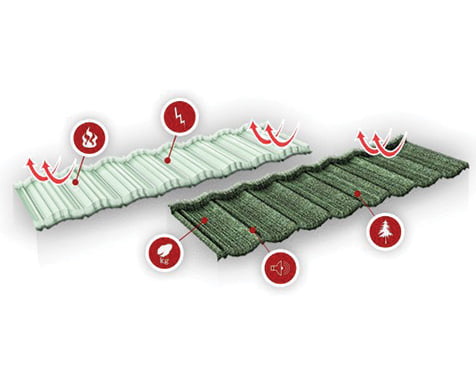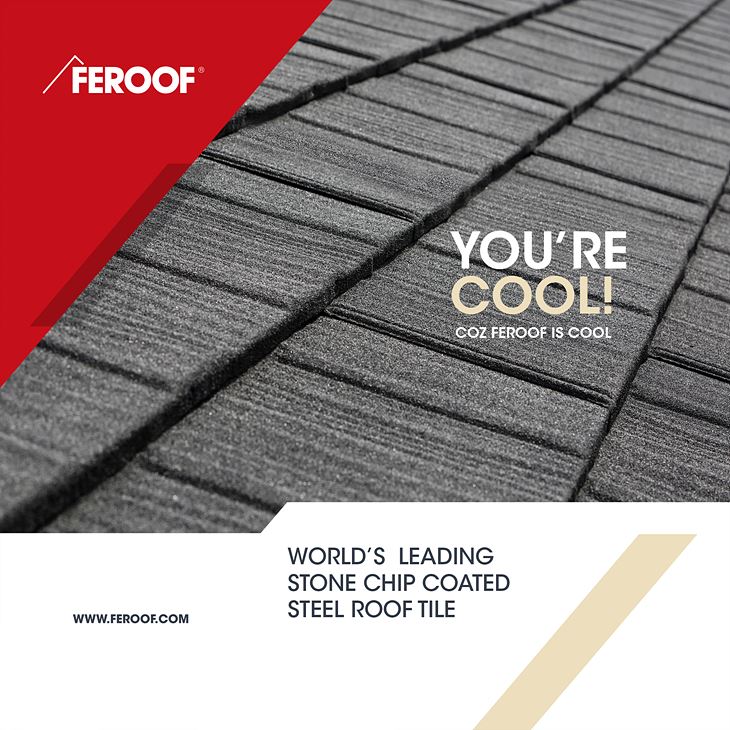Steel Tiles
The Structure of Steel Tiles
Each tile is formed or pressed from a sheet of steel which has special properties to allow it to bend without cracking, but also be very strong when installed on a roof and subject to people walking on them. The steel sheet has a core of steel 0.38mm thick which is coated both sides with a Zinc/Aluminium alloy to protect it from corrosion. Our Al-Zinc steel is produced by Posco, a Korean steel plant which is a world leader in steel technology. The Zinc/Aluminium protective coating is applied by dipping the steel sheet in a hot, molten bath of Zinc/Aluminium alloy and is then carefully controlled to be approx. 0.025mm thick on each side, so total steel sheet thickness is +0.40mm before applying any stone chip coating in the Feroof plant. Al-Zinc is the name used by our steel supplier, Posco, and similar coated steel made by other steel suppliers is called by similar names such as Galvalume, Zincalume, Aluzinc, ZincAl, etc and all these are substantially the same type of steel. But note that Galvanised steel, ZAM and Galfan are not the same as our Al-Zinc and generally not as well suited for use in steel roof tiles.
Note: 1.Some roof tiles and other steel roofs are made using galvanized steel sheet which is a steel substrate protected only by a zinc coating. However, tests have conclusively shown that Al-Zinc coated steel of the same thickness lasts at least 6 times longer in severe marine (salty air) environment so our Feroof tiles will perform much better than any galvanized steel roofs made by competitors.
Note 2. AL-Zinc steel should not have any copper flashings above it from which water can flow. If water with copper salts runs onto the AL-Zinc roof it can cause the steel substrate to deteriorate.


The History of Steel Tiles
According to legend, the metal tile was first used for a synagogue in Jerusalem in about 970 BC.
Around the world, the Parthenon (5th century B.C) and the Cathedral of Notre Dame (12th century) were built with metal roofs.
Turkish army stored explosives in the Parthenon, so the roof no longer exists, but the beautifully pitched roof of Notre Dame remains today. European metal tile came to America by the time of independence.
In the early 20th century, zinc was added to steel to prevent corrosion.
Our Products
FEROOFis...

Easy to install
All our products are designed to be as easy to install as possible for the installer's convenience.

Fireproof
All of our products are made of non-combustible materials to protect against fire.

Non cracking and curling
Our products will not crack or curl even when subjected to physical force.

Non-tearing
Our products never tear under any circumstances.

Lightweight
Weight is minimized for easier installation.

Durability
Resistant to earthquakes, typhoons, excessive heat and cold.
Features of FEROOF
Stone Chip Coated Steel Roof Tile
01
Insulation Effect
The effect of suppressing the temperature rise in summer
02
Windproof
Safe from typhoons, hail or strong winds
03
Earthquake Resistance
No risk of collapsing from an earthquake

04
Easy Install
No slippage, so that work is easy
05
Cost Effective
Minimized construction total cost
06
Snow Resistance
The snow on the roof in winter does not fall down
07
Nonflammable
Even though any fire events, frame does not spread
08
Lightweight
Minimized weight to load
09
Eco-friendly
Available for recycling to reduce waste of disposal cost

10
Durability
Coated natural stone powder ensures a long lifespan
11
Sound absorption
Absorb and diffuse the sound of rain, it makes almost silent
12
Various & Beautiful
Various colors and tiles make your building more unique
FEROOF
PerforamceTest
High Wind and Heavy Rain Test at JAPAN TESTING CENTER FOR CONSTRUCTION MATERIALS


The following test was done by “Japan Testing Center for construction materials” in Tokyo, Japan in which our roof tiles passed the most tough test and proved to be the best quality products.
